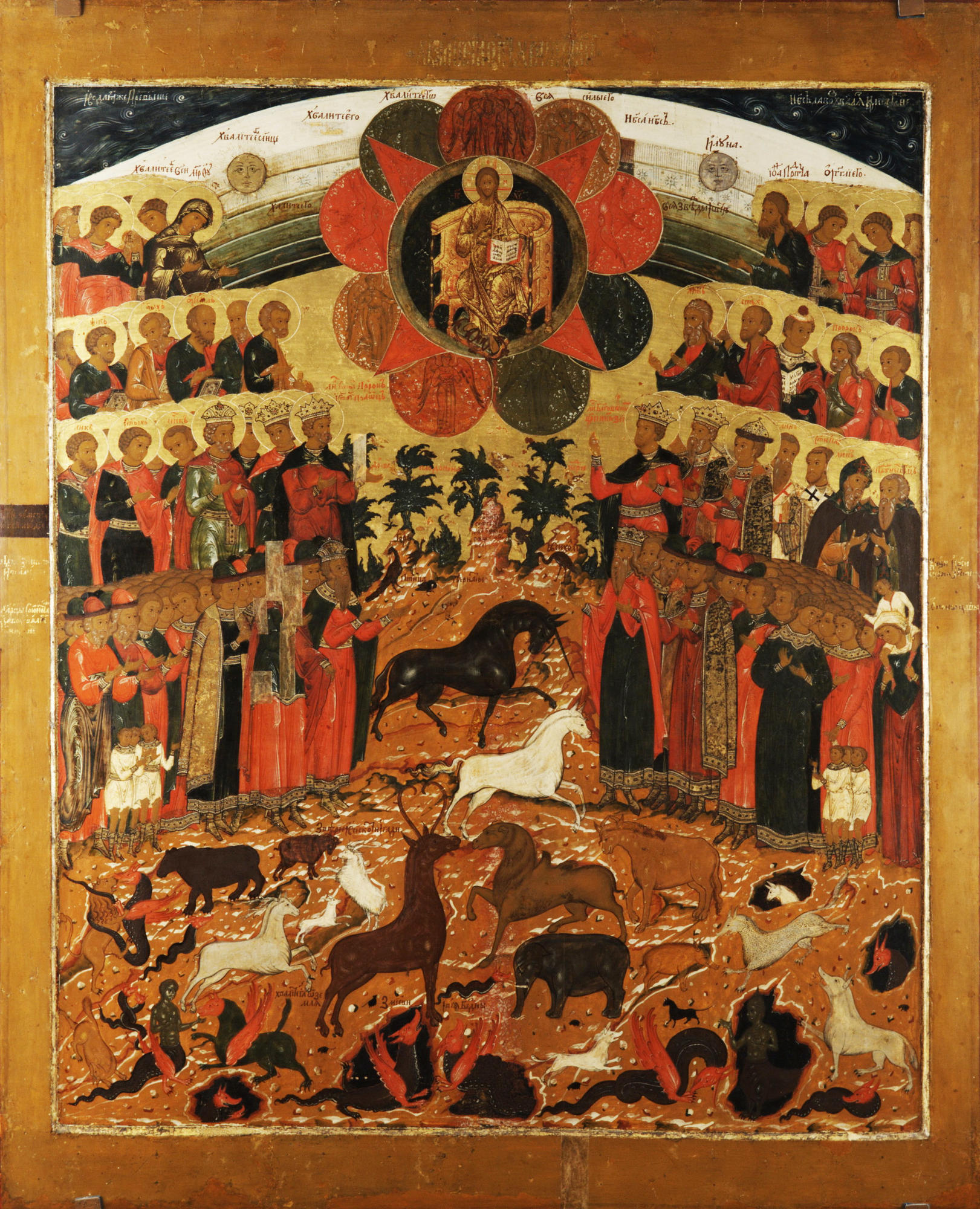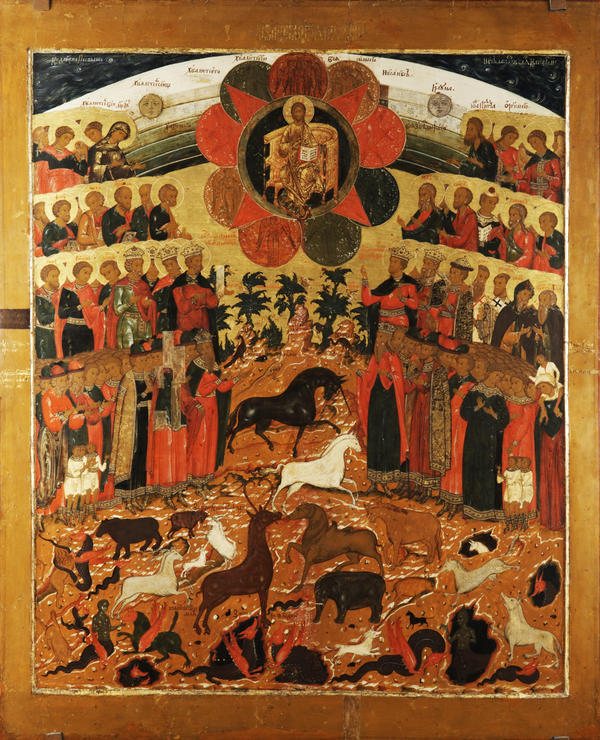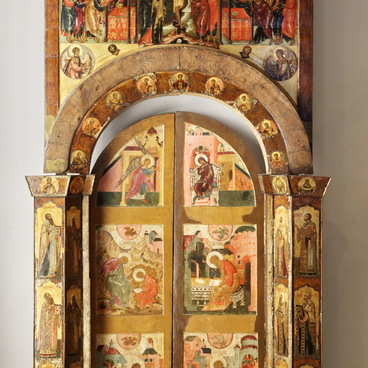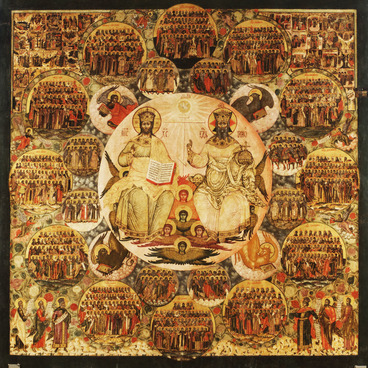The icon illustrates David’s Psalm 148, Praise the Lord from the Heavens. It says that everything created by the Lord glorifies and praises Him. The icon painter depicts the world that praises the Creator in accordance with the Holy Scripture.
Praise the Lord from the Heavens
Creation period
The second quarter of the 17th century
Dimensions
134x110 cm
Technique
Tempera
Collection
Exhibition
4
Open in app#1
Unknown author
Praise the Lord from the Heavens
#12
#13
The colors of the figures are traditional for the Yaroslavl iconography of the 17th century: red tones, different shades of green, brown and ochre alternate in contrasting combinations.
#14
At the top of the icon we can see Christ in Majesty. Jesus Christ, as the Heavenly King and Judge, sits on the throne against a background of seven heavens, depicted as arched stripes. Heavenly luminaries, the sun and the moon created by the Lord, also glorify Him. Christ holds the Gospel in one hand and blesses the world around Him with the other hand.
Below, the painter depicted the earthly firmament: a festive and solemn procession on both sides of Christ’s throne. Forefathers and kings, reverends and princes, young men, virgins and children are arranged in rows in accordance with a strict hierarchy.
#15
In the center, there are the mountains, and all hills, and all deeps: birds fly among bizarre trees and animals walk around. The artist painted both domestic and wild animals in the icon: a bear and a deer, a dog and a cat, a goat and mice. We can also see exotic animals, such as an elephant, a camel and a lion. The artist also painted a unicorn here. The mythical animal was believed to look like a horse, a deer or a donkey and was called the mother of the beasts. At the bottom of the icon, the underground caves, where the sunlight never penetrates, are inhabited by creatures of the earth: snakes with red heads and dragons. The depicted animals had their symbolic meanings, known to people of the 17th century from literary works. The camel in Christian writings could denote the dual nature of man - pure and sinful. In another interpretation, it meant a vindictive or angry man.
#16
The images of the seven heavens and luminaries, people and saints, animals and plants frame the throne of Jesus Christ. That was how the artist expressed the unity of the nature around the Savior and the harmony of the earthly beauty, in which the Divine plan manifests itself.
#17
Yaroslavl Museum Reserve
read morehide
00:00
00:00
1x
Praise the Lord from the Heavens
Creation period
The second quarter of the 17th century
Dimensions
134x110 cm
Technique
Tempera
Collection
Exhibition
4
Open in app
Share



